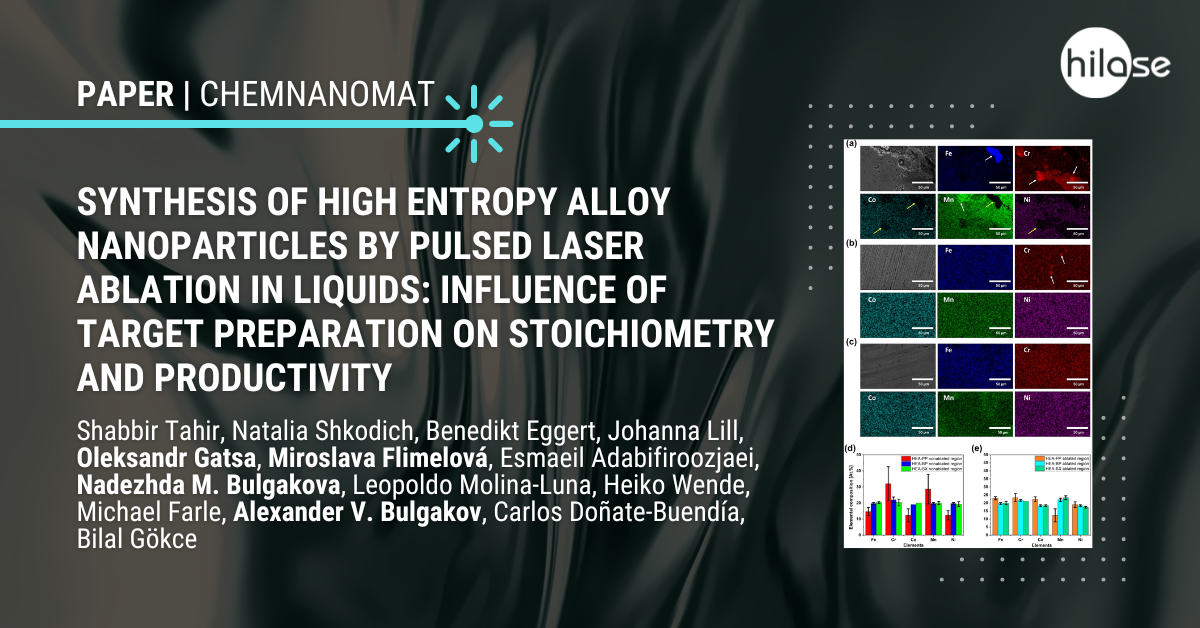HiLASIANS contributed to a paper recently released in the ChemNanoMat journal titled Synthesis of High Entropy Alloy Nanoparticles by Pulsed Laser Ablation in Liquids: Influence of Target Preparation on Stoichiometry and Productivity.

Congratulations on the publication to our colleagues:
- Oleksandr Gatsa (Postdoctoral fellow: Nanomaterials)
- Miroslava Flimelová (Associate scientist)
- Nadezhda M. Bulgakova (Head of Scientific Laser Applications & Team leader of Laser-matter interaction)
- Alexander V. Bulgakov (Team leader of Nanomaterials)
They collaborated with researchers from University of Wuppertal (Shabbir Tahir, Carlos Doñate-Buendía, Bilal Gökce), University of Duisburg-Essen (Natalia Shkodich, Benedikt Eggert, Johanna Lill, Heiko Wende, Michael Farle), and Technische Universitat Darmstadt (Esmaeil Adabifiroozjaei, Leopoldo Molina-Luna).
High entropy alloys (HEAs) have a wide range of applications across various fields, including structural engineering, biomedical science, catalysis, magnetism, and nuclear technology. Nanoscale HEA particles show promising catalytic properties. Nevertheless, attaining versatile composition control in nanoparticles poses a persistent challenge. This study proposes the use of pulsed laser ablation in liquids (PLAL) for synthesizing nanoparticles using equiatomic CoCrFeMnNi targets with varied preparation methods. We evaluate the impact of target preparation method on nanoparticle yield and composition as well as the magnetic properties of the nanoparticles. The elemental powder-pressed heat-treated target (HEA-PP), identified as the most time-efficient and cost-effective, exhibits noticeable segregation and non-uniform elemental distribution compared to ball milled hot-pressed powder (HEA-BP) and face-centered cubic (FCC) single crystal (HEA-SX) alloy targets. From all targets, nanoparticles (sizes from 2 to 120 nm) can be produced in ethanol with a nearly equiatomic CoCrFeMnNi composition and a FCC structure, showing oxidation of up to 20 at.%. Nanoparticles from HEA-PP exist in a solid solution state, while those from HEA-BP and HEA-SX form core-shell structures with a Mn shell due to inhomogeneous material expulsion, confirmed by mass spectrometry. HEA-PP PLAL synthesis demonstrates 6.8 % and 15.1 % higher productivity compared to HEA-BP and HEA-SX, establishing PLAL of elemental powder-pressed targets as a reliable, time-efficient, and cost-effective method for generating solid solution HEA nanoparticles.








